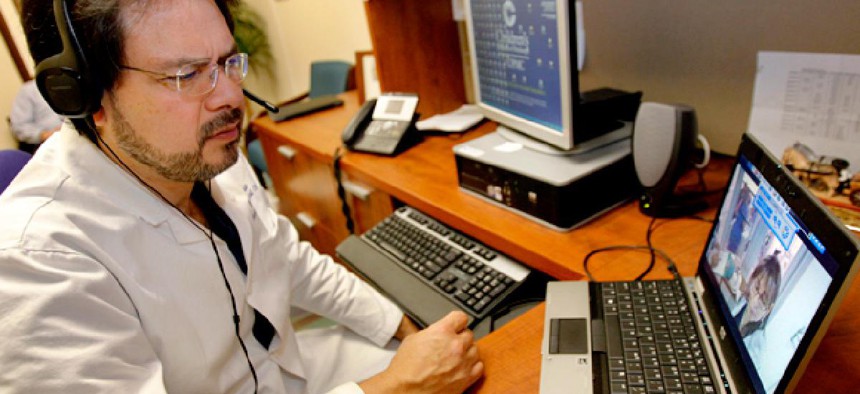Where E.R. doctors work entirely via Skype

Keith Srakocic/AP
In South Dakota, long-distance doctoring is bringing health care to rural communities.
Every day -- and through the night -- in Sioux Falls, South Dakota, doctors report to work in a hospital where there are no patients.
And in over 70 rural communities in four states, patients stricken by heart attacks, or injured in car accidents, or facing other urgent health issues are rushed to an E.R. where there are no doctors. Or, more precisely, there's one doctor. More often than not, he or she is trained in family practice, not emergency care. And if the call's coming in the middle of the night, he legally has a half-hour to get out of bed and report in.
In these small-town hospitals, which often have 25 or fewer beds, South Dakota's largest city is the closest available source of comprehensive healthcare. The people who choose to live in small, geographically isolated communities throughout the Midwest are used to making the trek -- long car rides come standard with country life. But during emergencies, the up-to 200 miles to Sioux Falls becomes very, very far away.
But when the call comes in the middle of the night, with the push of a button -- mounted right on the ER's wall -- the nurses on-duty are able to connect with ER doctors in Sioux Falls, who have been waiting, in their patient-less hospital, for their call.
Avera Health Network is believed to have the only long-distance critical care center in the U.S., and possibly the world. Based at Avera Mckennan Hospital, the nonprofit provides a range of "telemedical" services that take advantage of technology -- including high-definition two-way video consulting -- to make it possible for experts to be available 24/7 in locations throughout South Dakota, North Dakota, Minnesota, Iowa, Wyoming, and Nebraska.
NEXT STORY: FCC gives DISH permission for cellular network





